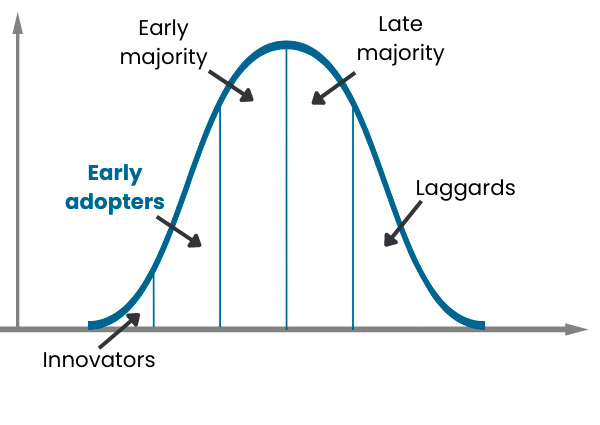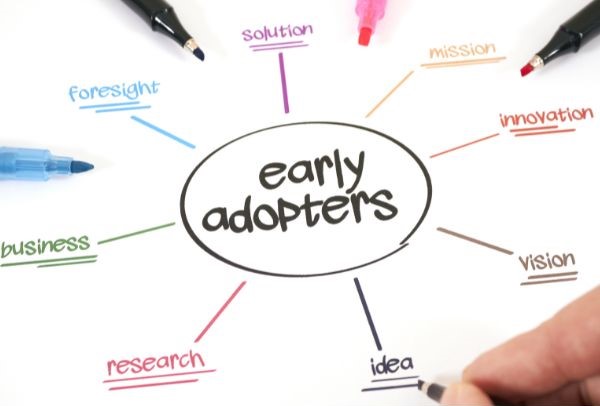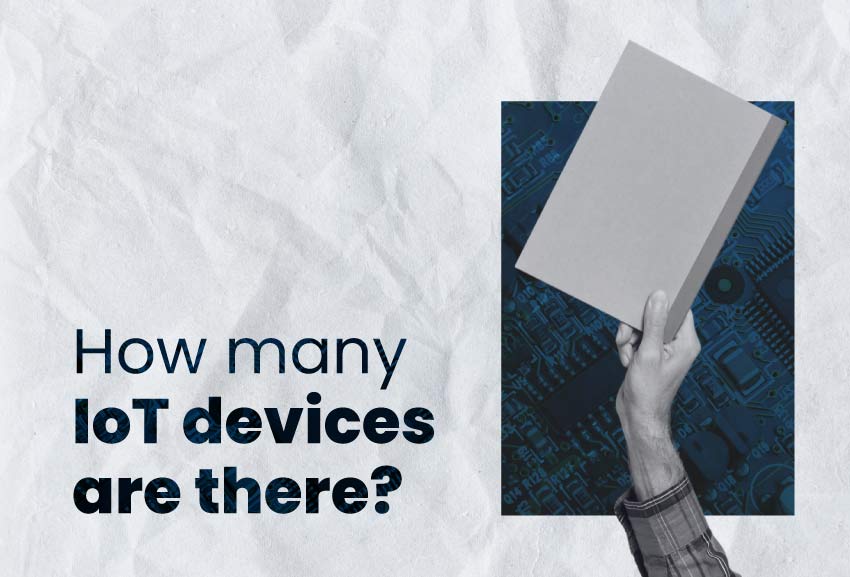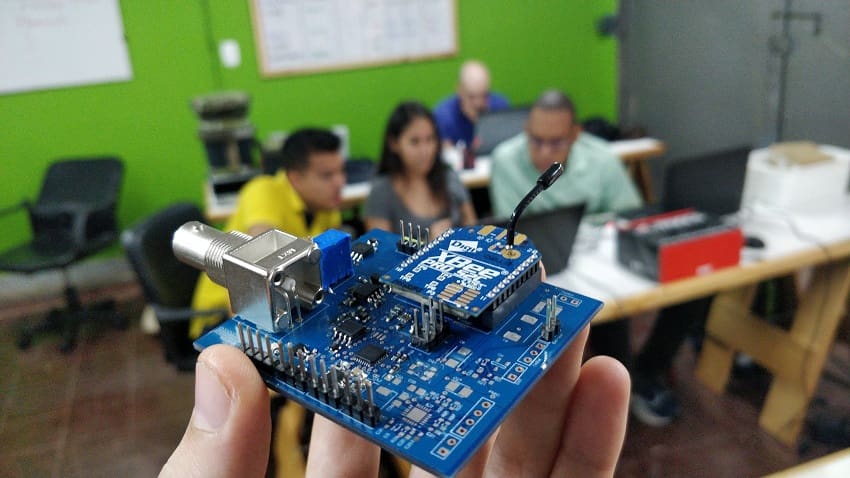Among the reasons why is IoT important, we can easily realize that every object or device that can collect and send data becomes indispensable to its user. And here, early adopters of technology play a pivotal role in shaping the trajectory of a project. Understanding who they are, how to identify them, and most importantly, how to attract them, can significantly impact the success of your IoT project when it is just starting. In this article, we explore the distinctive characteristics of early adopters, the adoption life cycle, and strategies to captivate this influential group.
What are early adopters?
Let’s clarify who they are. Early adopters are individuals or organizations that eagerly embrace new technologies and innovations. They are the trailblazers who willingly take risks to be among the first to experience and adopt state of the art products.
Characteristics of early adopters
Early adopters exhibit specific traits that set them apart. They are tech-savvy, open-minded, and possess a willingness to explore uncharted territories.
When it comes to an IoT marketing strategy, identifying these characteristics in potential users is key to targeting the right audience for your IoT project. Talk about the innovative functions your device has, mention the technologies it is built upon, highlight compatibility features with other systems or devices.
Also, it is crucial to understand where you can find early technology adopters of your product. For instance, if you are planning to launch wearable IoT devices, you should consider promoting your products in forums where these users usually participate, like fitness websites, groups, or clubs (see speed to market).
Another way is to look for events where new gadgets will be introduced around wearable technologies, and showcase your products. There will be early adopters that will be interested in the features you offer.
Understanding the adoption life cycle

Early adopters kickstart the adoption life cycle. Their enthusiasm and willingness to experiment make them the initial users who pave the way for broader acceptance of the technology.
Recognizing their influence is paramount for achieving great results in your IoT project. When you launch a new product, this market niche will be crucial for ensuring a faster growth of your business (see product development strategy).
For instance, if you already checked prototype examples and you built your own IoT prototype, the recommendation is to start reaching those early adopters as soon as possible, as they will be the first buyers of your product or idea.
How will the adoption life cycle advance? The word of mouth from technology early adopters will convince others to purchase from you, and this new group of customers will become early majority, and thus, the cycle will continue until it arrives to late majority, which are consumers that don’t dear to buy the first version of a product or service, instead, they prefer to wait a certain period of time to evaluate better the product when it has more reviews or upgrades.
Finally, laggards will be people that buy your product after it has been in the market for a while. They weren’t interested in becoming early adopters, maybe they didn’t even know your product was already for sale.
Strategies for reaching out technology early adopters
Look for individuals who have a history of embracing emerging technologies, like influencers or content creators that you identify on social media platforms. Those who have adopted previous innovations are likely to be receptive to your IoT project.
Offer exclusive access to future upgrades, discounts on complimentary platforms, or personalized support to ensure a higher acceptance. During the product crowdfunding phase, many startups or inventors offer exclusive rewards to the first buyers. Check some success stories that other innovators like you have implemented and try to adapt those strategies to your project.
Early adopters examples by industry
Here are some specific IoT products that tend to capture the interest of early adopters
Smart home devices:
IoT energy solutions are not new, but they come in a variety of presentations which offer a lot of benefits to homeowners and companies. For instance, new smart meters, smart thermostats, and smart lighting systems that can be automated or respond to voice commands are appealing to tech-savvy users.
Wearable technology:
Early adopters are often fitness-conscious individuals who appreciate the advanced features of smartwatches and fitness trackers, such as health monitoring and integration with other devices.
This is why you see many companies in the market developing new wearables that come in different presentation formats: smart clothes, trackers, smart glasses, sensors, jewelry, among others.
Connected cars:
With the popularity of Electric Vehicles, many companies are developing new AI features and devices that make the driving experience more interesting.
In this case, early adopters may be intrigued by devices that offer insights into their vehicle’s performance (see IoT fleet management use cases), driving habits, and provide real-time data through connectivity.
Health and wellness devices:
In a similar category to the previous one, there are devices that monitor health metrics, such as blood pressure, heart rate, sleep patterns, and offer mindfulness exercises through an app. These technologies are attractive to those who prioritize personal wellness.
But that’s not all, if you analyze IoT in healthcare examples, you will realize there are thousands of possibilities to offer a better experience to both medical staff and patients regarding specific treatments.
Smart appliances:
Connected refrigerators are a great example of appliances that can provide inventory updates, and suggest recipes based on available ingredients. These kinds of features appeal to early adopters seeking a connected home experience.
Also, keep in mind vacuum robots, smart TVs with more connectivity (or transparent screens), home assistants, and other devices that help people perform normal tasks in an easier and faster way are becoming more common in the market, thus, there are more chances to attract early adopters of technology.
Smart cities solutions:
Early adopters with an interest in urban development may be drawn to smart city solutions, including intelligent traffic management, waste management, smart parking, and environmental monitoring.
Augmented Reality (AR) and Virtual Reality (VR) devices:
AR and VR devices are very popular nowadays, if you build devices that can provide these experiences you will surely attract a great portion of customers.
Retailers and streaming platforms are working on content that can be displayed in these devices. However, there is still a lot of road ahead to convince the users to buy these VR glasses.
Industrial IoT (IIoT) solutions:
On the side of companies, managers and CEOs may be interested in IoT solutions that enhance efficiency, monitor equipment health, and provide predictive maintenance insights.
There are several industrial IoT applications you can take advantage of, just look for the right problem to solve, and early adopters will show up.
AI and IoT solutions:
There are plenty of new developments around AI, and its integration with devices, platforms and objects make it really attractive to early adopters. If you are thinking about developing products for this area, think of programming languages that are easy and friendly to use (see IoT with Python).
Early adopters of technology can boost your brand
Once early adopters are onboard, their positive experiences have a ripple effect. Their feedback and endorsements become powerful marketing tools, influencing the larger population and accelerating the adoption life cycle (the image we showed above).
As you could see, understanding the role of early adopters in your IoT project and attracting them is crucial for ensuring a good point of start for your business. However, bear in mind that this is just the beginning, you will need to work harder on marketing strategies to attract more customers in the adoption life cycle.
And last but not least, you need to count on good IoT product development services that guarantee your device will perform well under any circumstances. Pay special attention to developing a reliable and innovative product, and early adopters out there will love what you have to offer.
Are you looking for a company that can listen to you and help you build your next IoT project? Click on the button below, tell us how what you want to build and we will be in contact with you as soon as possible.






